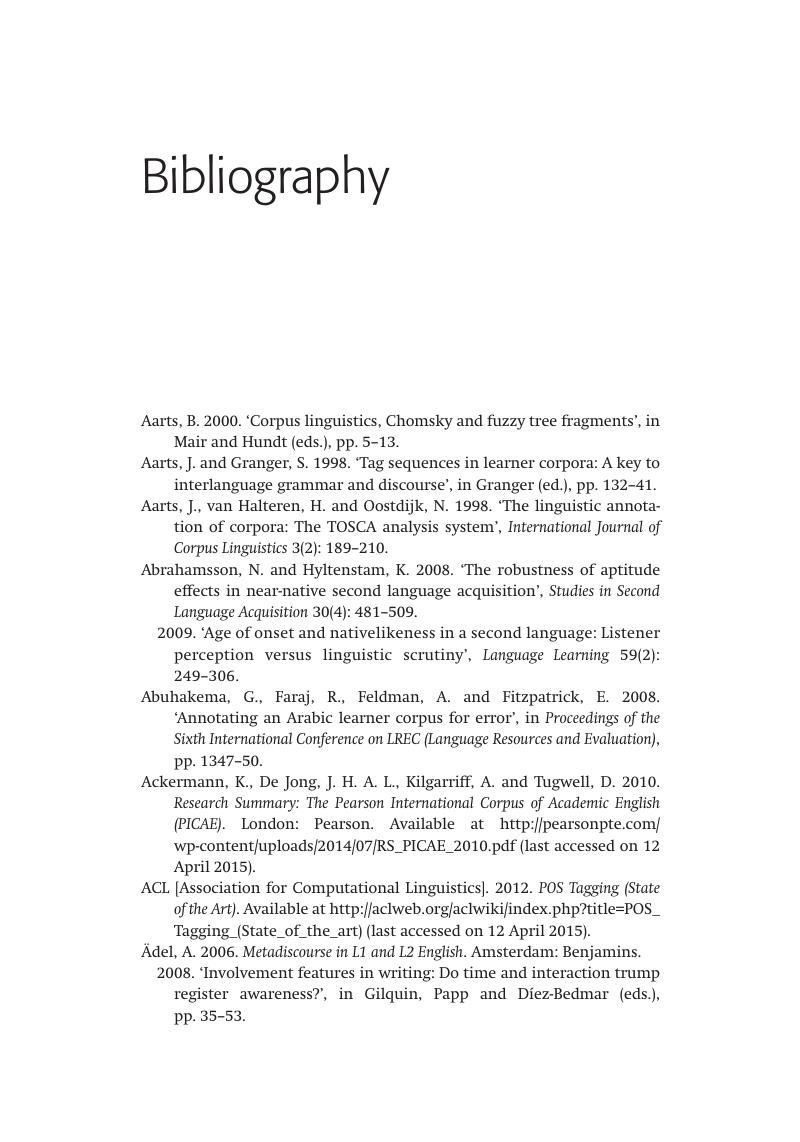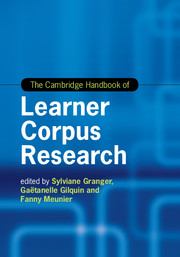Book contents
- The Cambridge Handbook of Learner Corpus Research
- Cambridge Handbooks in Language and Linguistics
- The Cambridge Handbook of Learner Corpus Research
- Copyright page
- Contents
- Figures
- Tables
- Contributors
- Acknowledgements
- 1 Introduction: learner corpus research – past, present and future
- Part I Learner corpus design and methodology
- Part II Analysis of learner language
- Part III Learner corpus research and second language acquisition
- Part IV Learner corpus research and language teaching
- Part V Learner corpus research and natural language processing
- Bibliography
- Author index
- Subject index
- Corpus index
- Software index
- References
Bibliography
Published online by Cambridge University Press: 05 October 2015
- The Cambridge Handbook of Learner Corpus Research
- Cambridge Handbooks in Language and Linguistics
- The Cambridge Handbook of Learner Corpus Research
- Copyright page
- Contents
- Figures
- Tables
- Contributors
- Acknowledgements
- 1 Introduction: learner corpus research – past, present and future
- Part I Learner corpus design and methodology
- Part II Analysis of learner language
- Part III Learner corpus research and second language acquisition
- Part IV Learner corpus research and language teaching
- Part V Learner corpus research and natural language processing
- Bibliography
- Author index
- Subject index
- Corpus index
- Software index
- References
Summary

- Type
- Chapter
- Information
- The Cambridge Handbook of Learner Corpus Research , pp. 629 - 724Publisher: Cambridge University PressPrint publication year: 2015



